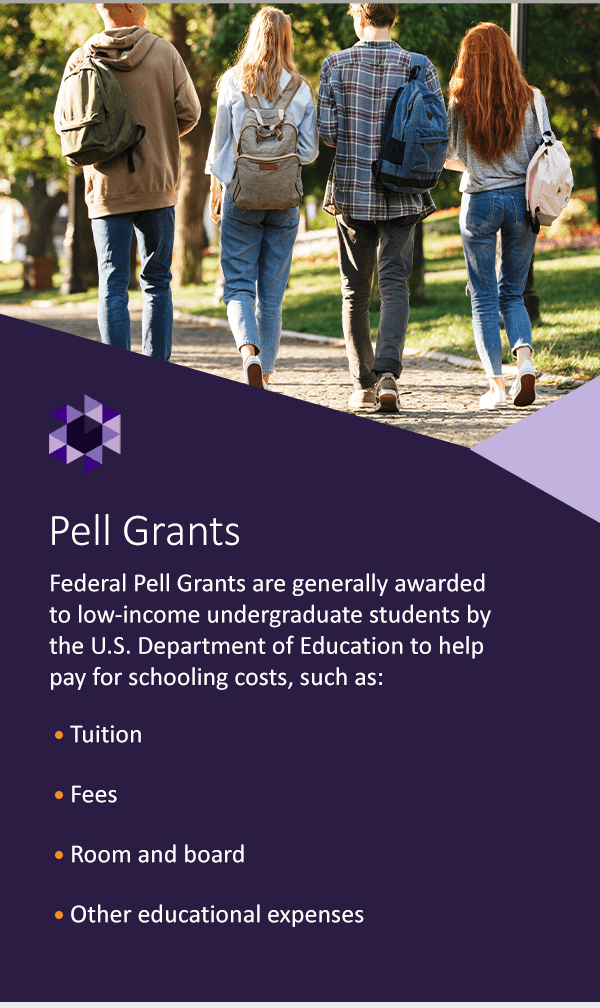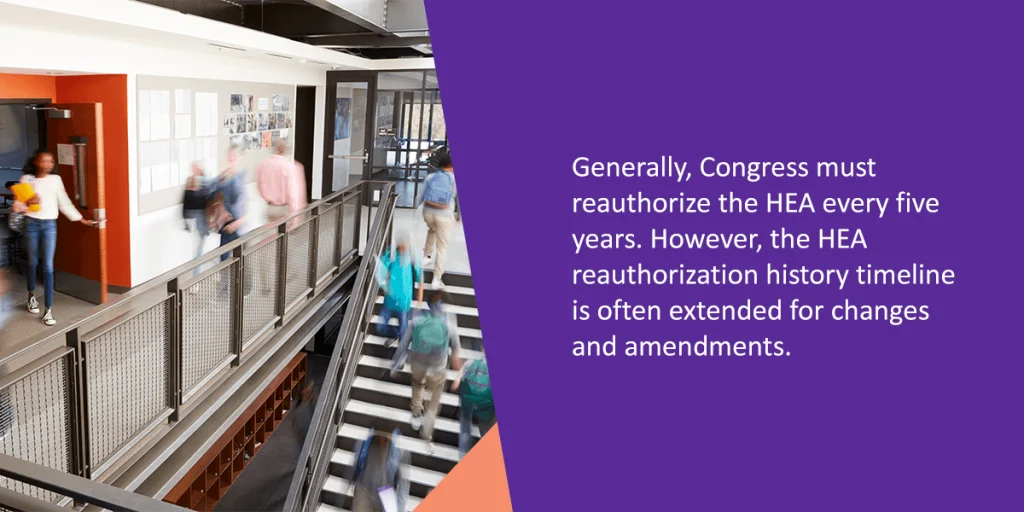




Higher Education Act Reauthorization: What Colleges and Universities Need To Know
The Higher Education Act (HEA) of 1965 is one of the most important pieces of legislation for expanding access, financial aid, and opportunities to students of all backgrounds seeking to progress in their education. Unlike some other legislation, Congress must generally examine and reauthorize — or renew — the HEA every five years to ensure any changes align with the current standards of higher education institutions.
These amendments also account for the current political climate, technology, and anti-discrimination efforts. However, reauthorization has been essentially put on hold since the last update in 2013, largely as a result of the COVID-19 pandemic. This article will expand on the information college and university administrators should keep in mind about HEA and its potential changes in the next few years.
The Higher Education Act is a federal law designed to regulate and govern colleges, universities, and the administration of higher education programs. The HEA is commonly known as the piece of legislation that increased college enrollment nationwide. The primary goal of this legislation is to expand opportunity and prevent institutions from denying any students the chance to complete their postsecondary education due to socioeconomic status or financial restrictions.
The HEA aimed to provide financial assistance to students seeking postsecondary education and improve resources provided in higher education institutions across the nation. Congress first passed the HEA in 1965 to expand educational opportunities for students, including minority and economically disadvantaged students, by assisting them and their families with financing postsecondary education through low-interest loans.

Since 1965, the U.S. has made exceptional progress in expanding higher education. While there are still gaps in access and degree-completion rates across the country, more people are going to college than ever. In 1965, only about 3.97 million people enrolled in public colleges. In 2020, this figure was 13.87 million, with forecasts showing that there will be over 15 million people enrolled in college by 2030.
In 2015, the 50th anniversary of the HEA, the National Education Association commended this transformative legislation for establishing federal student loans, need-based grants, and work-study opportunities, making it easier for millions of Americans to access an affordable college education.
The HEA has undergone multiple amendments and includes new title initiatives. Here are the HEA titles and their provisions:
The HEA offers a variety of financial aid options, including Pell Grants and Stafford Loans, to support students attending secondary schools.

Federal Pell Grants are generally awarded to low-income undergraduate students by the U.S. Department of Education to help pay for schooling costs, such as:
Students who are eligible for a Pell Grant must apply by completing their Free Application for Federal Student Aid (FAFSA). Students who receive a Pell Grant generally do not have to pay it back unless they withdraw from courses or change their enrollment status.
Stafford Loans are a type of federal student loan that must be repaid. These fixed-rate loans, also called direct loans, help students with higher education costs, such as those listed above. The amount of a grant or loan awarded to a student depends on the costs of the school and whether they are a full-time student.
The government offers Stafford Loans as either subsidized loans, meaning the government pays interest until the student graduates, or as unsubsidized loans, where the student pays all of the interest while in school. Students must start paying back these loans upon graduation, six months after they leave school, or if change their enrollment status to reflect only going to school less than half-time.
In addition to financial aid, the HEA provides funding and oversight for student research, program initiatives, scholarship programs, international education, and accreditation of institutions and programs. This legislation also provides federal aid for the oversight of teacher preparation programs.
Generally, Congress must reauthorize the HEA every five years. However, the HEA reauthorization history timeline is often extended for changes and amendments. Congress has reauthorized the HEA in the following years:
The HEA was set for formal reauthorization in 2013, but Congress extended this deadline to 2015. Since then, the HEA has not been formally reauthorized, and its programs have been operating on temporary extensions.

However, there have been several considerations, recommendations, and proposals for new amendments to the bill. As of 2019, the Congressional Higher Education Act reauthorization work includes many recommendations for improving opportunity and simplifying aid, such as:
As of January 2023, Congress has essentially put the HEA on hold since 2013. Though Congress neared an agreement in 2020, the COVID-19 pandemic interrupted these proceedings, which have not since resumed.
HEA programs were still allowed to operate during these deliberations, and many members of Congress have proposed changes like those stated above. However, some sources say a formal reauthorization will likely not happen for another several years, as Congress continues to disagree about the amount of involvement the government should have in higher education.

The HEA has helped higher education institutions around the nation expand access, resources, programs, scholarships, and many other opportunities for students. This act has fundamentally changed postsecondary education and set the tone for improvements in higher education as a whole.
As the HEA continues to adapt throughout the upcoming years, colleges and universities need to have access to solutions that make accreditation, learning outcomes measurement, and institutional research and planning easier. With the right comprehensive tools in hand, educational institutions can continue to serve students for generations to come.





























































































































































































































































































































































































